Don't wanna be here? Send us removal request.
Photo
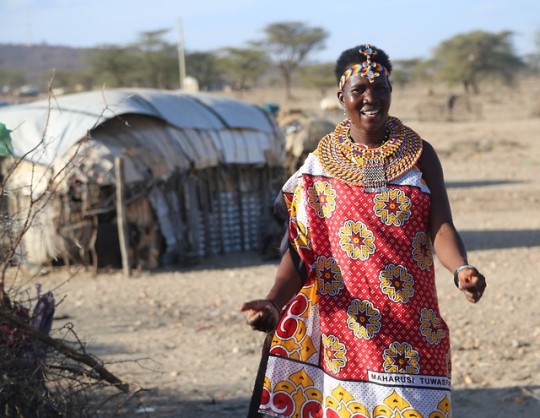
Cecilia Apaa - Community Health Worker; Samburu County
I have worked as a CHW for 7 years now. The effectiveness of a CHW is largely determined by their ability to provide preventative, promotional and rehabilitative care to communities. For low literacy communities this is not an easy feat without the support user friendly tools.
Recently we have been trained on how to supplement health messaging with visual aids and audio devices like illustration guide books and digital radios -digisomo - . These have made my work more exciting and rewarding.
Looking at how patriarchal barriers have been customary to the women in pastoral communities, it became urgent that we engage men as the key decision makers in families to improve the socio cultural and gender norms.
We started engaging fathers to empower them on how to establish a saving plan for their unborn baby and to ensure that they support their spouses to attend at least four antenatal care visits before delivery.
Fathers who are members of father support groups say they have learnt how to negotiate better with their spouses. Mothers say that their spouses accompany them to the health facility for ante natal checkups and provide for transport to the health facility when delivery time comes.
0 notes
Photo
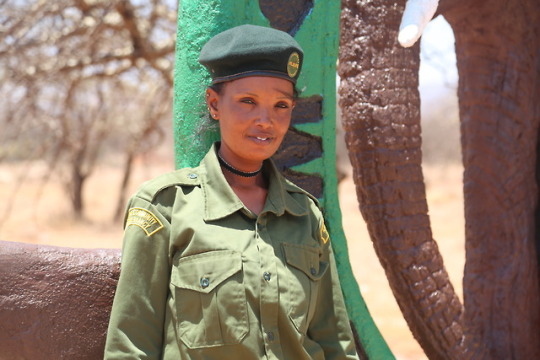
Josephine Lenayasa - Ranger & Community Health Worker
I became a ranger because I grew up around rangelands where I developed a passion for animals and wild life. One of the guiding principles of a ranger is discipline which goes hand in hand with commitment to serving the community. In my post as a radio operator in a conservancy I relay messages from one post to another.
USAID supported the training of my peers as community health workers to scale up the uptake of health services by communities living around rangelands and also reduce maternal and newborn mortalities. I use my time off duty to empower rangeland communities on health seeking behavior, nutrition, hygiene and sanitation. When on duty I also act as an intermediary between the community and nearby health facilities for referrals and emergency rescue cases. In a day’s work I rescue animals and save the lives of mothers and children.
Part ½
0 notes
Photo
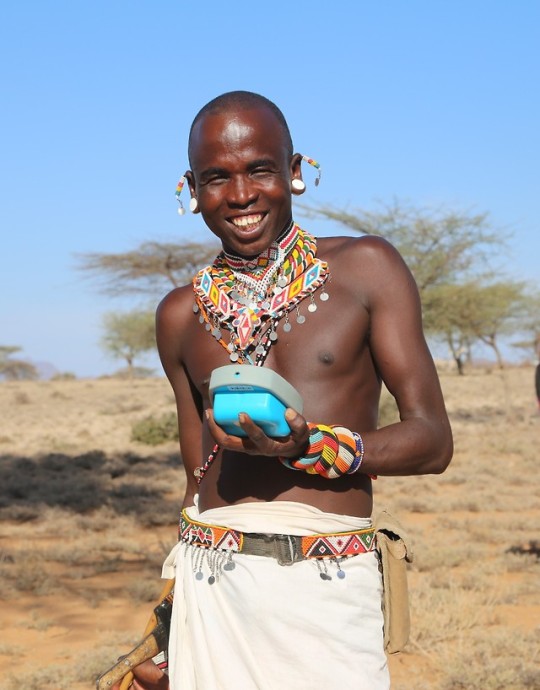
Jeines Lebasha - Community Health Worker
I attended the first African Social Behavior Change Conference and was exited to show case one of the technological devices that we are using to transform gender and socio cultural norms that influence the uptake of family planning, maternal, newborn, child and adolescent health services in my community.
The digital audio device contains prerecorded messages in family planning, maternal, newborn, child and adolescent health in local language. It is easy to transmit the messages which also contain jingles which enhances retention and keeps the audiences engaged. I use this device to empower members of my community with knowledge on health seeking behavior, nutrition, sanitation and hygiene. Once each topic has been played the device allows for us to have feedback sessions which are also recorded.
Low literacy is no longer a barrier to access of health services in the communities we have reached.
0 notes
Photo
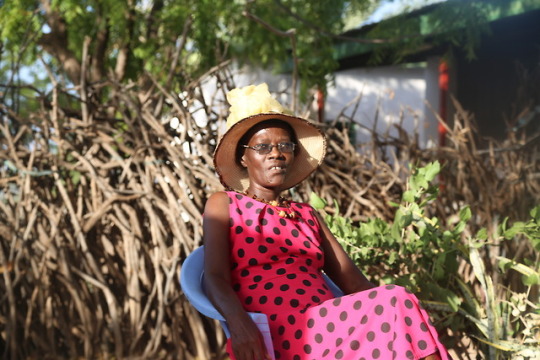
Rael Kukule Akoru - County Assistant Public Health Officer & Schools Health Coordinator
Children, the youth and adolescents, spend 80% of their growth and development in schools.
The onset of adolescence brings changes to their bodies especially in matters sexuality. In pastoral communities both boys and girls are dis proportionally affected by unwanted sex or marriage; putting them at risk of unwanted pregnancies, dangerous childbirth, unsafe abortions and sexually transmitted infections including HIV.
These vulnerabilities are heightened by barriers such as lack of access to services and accurate information on reproductive health and care.
With the support of partners we undertook an assessment study to identify other gaps in schools hygiene and sanitation, and nutrition. This informed the need for holistic interventions that would address, hygiene promotion, nutrition and health education with a focus on adolescent and youth sexual reproductive health and drug abuse. A school based integrated outreach has been developed as an innovative way of linking adolescents and youth to the nearest health facility for ease of access to basic health services.
During the school-based integrated outreaches, students in both primary and secondary schools are sensitized on safe sex practices to demystify myths surrounding sex, eliminate teen pregnancies and keep them in school. It also helps them make healthy reproductive health choices through drama, life skills training and interactive discussions about peer pressure, drug abuse, healthy living, hygiene and sanitation; nutrition and gender-based violence.
0 notes
Photo
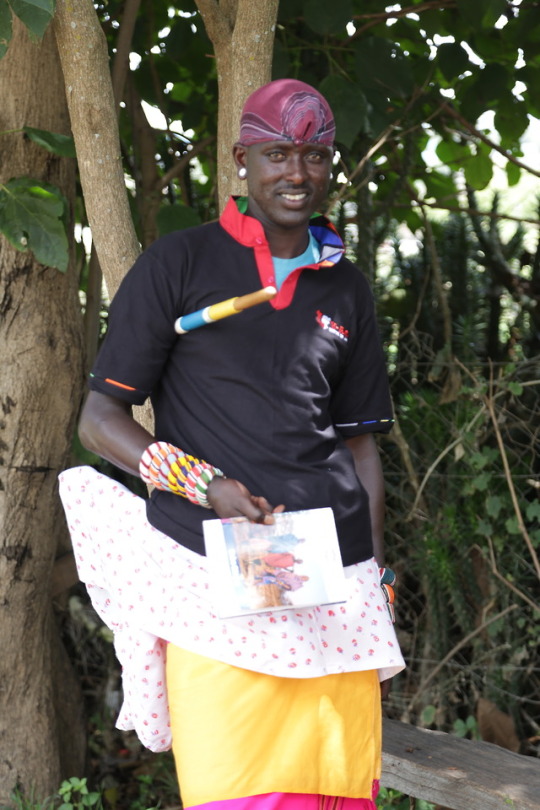
David Letiwa - Moran and Community Health Volunteer - Samburu County
Moranism is the epitome of heroism in my community. I became a moran at the age of 17 and will graduate from the role at the age of 35. Once you become a moran your life revolves around protecting the community and it’s cattle from enemy attacks during raids. We are not allowed to marry until we have graduated from being a moran. After graduation we are expected to marry immediately and start a family yet getting a bride requires you to have a lot of cattle to pay for dowry. That is why inter community raids are part of our lifestyle.
My community did not value education in the past and we only had the culture that was passed down from our forefathers; most of which are harmful practices including delivering at home, female genital cutting and early child marriages. In my community women are not allowed to make any decisions whatsoever. They cannot seek health services without seeking permission from their husbands…. “A blind man cannot lead a blind man”.
I did not like how women of reproductive age were losing their lives and babies; that is why I enrolled to become a community health volunteer (CHV) when there was a call from the government. I have been working as a CHV for three years although when I started I was rebuked by my peers for going against the communities expectations.
Now I am a hero among mothers in my community, my peers are now enrolling to become CHV’s because they have experienced the value of fighting for the health of women and their rights. In the trainings offered by USAID through the AFYA TIMIZA project we are taught on the dangers of female genital mutilation, impacts of early and forced child marriages, maternal, newborn and child health. I will continue advocating for family planning and maternal health issues so that we can have a community free of all the cultural impediments including patriarchy towards gender inequality and the general development of our community.
0 notes
Photo
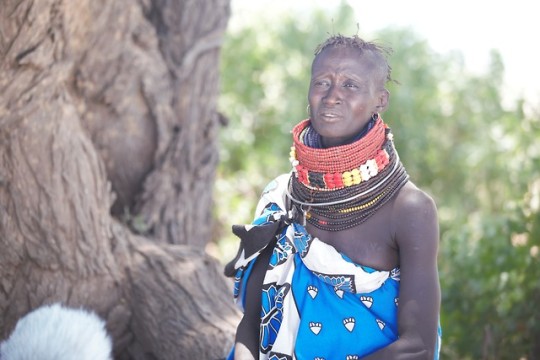
Loriita Ekomol - Skilled birth promoter and birthing companion - Turkana county
In the past we had our ways and that was all we knew. The life of a woman in my community revolves around bearing children, looking after livestock and the home; and building houses whenever we move from one place to another. Anyone who has not lived the nomadic life may think it’s difficult for us, but the biggest challenge that we faced was losing the lives of mothers and children during delivery. As long as we are healthy, walking for days on end in search of pastures and water for our livestock is part of us.
I learnt how to assist mothers during delivery from my mother and I would try my best to save the lives of a mother and child. Sometimes a mother could survive but loose her child or both could lose their lives. Sometimes babies were born with defects, some would become ill for a long time. In some cases mothers would lose a lot of blood and never regain their usual strength to support the group when migrating. Then, they would be treated as a burden for slowing down the group.
The lack of knowledge on safe pregnancy and delivery was my greatest undoing. Mostly we could rely on traditional healers to cure most illnesses but it really never really worked.
Recently, with the support of the government and partners through community health volunteers and medical outreaches we have learnt that the best way to prevent maternal death is by seeking services at the health facility. I now understand why it is critical for a mother to seek antenatal services. The tetanus shot and the iron a mother is given during pregnancy are helping mothers to deliver strong babies and they don’t bleed too much during delivery.
Now, I support mothers from my Kraal as a birthing companion and skilled birth promoter. I ensure that they attend antenatal clinic and seek skilled delivery services. We start counting the days of the pregnancy from the time when a woman’s period stops. The maternal book that mothers are given at the health facility during antenatal clinic also help us to look out for danger signs and keep track of the pregnancy; that way we start walking to the health facility two weeks before the mother’s delivery due date. Sometimes a mother will deliver before we get to the health facility but I will ensure that she seeks postnatal care for herself and her baby including immunization.
Maternal and newborn deaths have reduced significantly ever since we stopped home and unskilled deliveries. #maternalhealth #SDGs
0 notes
Photo
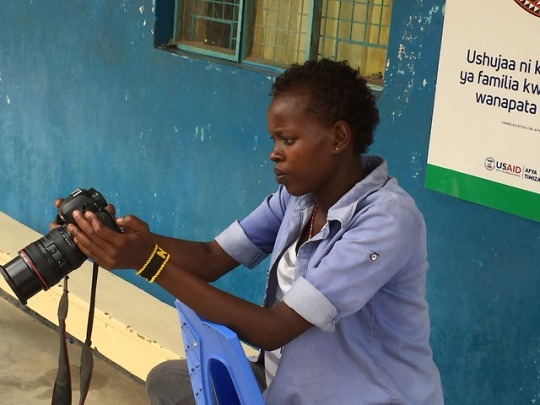
Jemima Yeshua, 17
Everyone who came to our school to speak to us kept insisting that we should not make friends with boys and should focus on our education. It’s like we are not human, who doesn’t know how complicated the adolescent phase can get? It becomes more difficult with the onset of youth, we have the deep need for both independence and tender loving care. Unfortunately, the notorious sense of invisibility and mortality that comes with the phase promotes risky behavior. No one advised me on how to not get pregnant but some experiences and circumstances make you wiser. I want to continue with my education after I have my baby and become a photographer. Were it not for the Community Health Volunteer in my community I wouldn’t have known about attending antenatal clinic.
The adolescents and youth should not just be told to refrain from risky behavior; we should also be advised on safe sexual reproductive health habits.
0 notes
Photo
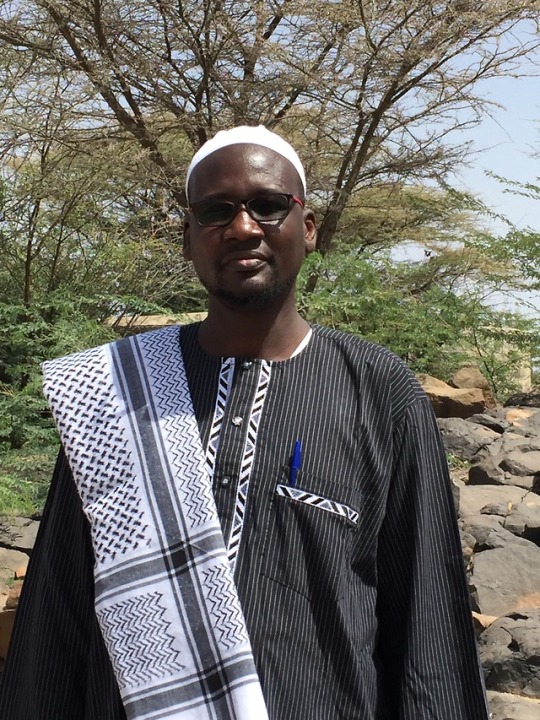
Hajj Salim Naita – National Muslim Leaders Forum: Turkana chapter chairperson
In the Quran we have a command that emphasizes that “Mothers should nurse their children for two full years those who wish to complete the full term of nursing…” (Quran, 2:233)
With regard to this command men are expected to allow their wives to focus on the upbringing of their children including breastfeeding and without engaging in sex during this period. In retrospect, some communities will debate that this is part of the reasons why Muslims accept polygamy.
To the Muslim community breastfeeding is a natural form of child spacing although not all Muslims observe this command. It has been scientifically proven that when a woman exclusively breastfeeds her body naturally stops ovulating. You can’t get pregnant if you don’t ovulate. That’s why breastfeeding-as-birth control is also called the lactational amenorrhea method (LAM). “Lactational” refers to breastfeeding, and “amenorrhea” means not having your period.
As a leader in a nomadic pastoral community, I take it upon myself to educate and counsel the men in my society on the benefits of child spacing to the woman, family and community as a whole.
Over the years we have experienced the numerous health benefits of breastfeeding including enhancing children’s immunity and protecting them from infections, apart from being a sterile source of nutrition. Furthermore, it allows a mother to recover her strength after delivery and ensures that the offspring continues to receive adequate nutrition and maternal attention.
Lack of knowledge and information on the importance child spacing is one of the major deterrents to family planning uptake in my community. Despite the patriarchal nature of our community; dialogue that enlightens the community on the benefits of good health practices is not forbidden. It is critical that we continue to diversify the ways in which information reaches the community.
Religious leaders have the privilege of engaging a wide audience and play a powerful role in shaping attitudes, opinions and behaviors of their congregants. I applaud USAID/AFYA TIMIZA for training the various religious leaders in our communities on family planning, reproductive, maternal, newborn, child and adolescent health; water, sanitation and hygiene; and nutrition.
The health of mothers and children in the community should not only be a concern for medical practitioners; the death of a mother or child affects the society as a whole and we should all aim at seeking preventative solutions at all levels.
1 note
·
View note
Photo

Hajj Salim Naita – National Muslim Leaders Forum: Turkana chapter chairperson
In the Quran we have a command that emphasizes that “Mothers should nurse their children for two full years those who wish to complete the full term of nursing…” (Quran, 2:233)
With regard to this command men are expected to allow their wives to focus on the upbringing of their children including breastfeeding and without engaging in sex during this period. In retrospect, some communities will debate that this is part of the reasons why Muslims accept polygamy.
To the Muslim community breastfeeding is a natural form of child spacing although not all Muslims observe this command. It has been scientifically proven that when a woman exclusively breastfeeds her body naturally stops ovulating. You can’t get pregnant if you don’t ovulate. That’s why breastfeeding-as-birth control is also called the lactational amenorrhea method (LAM). “Lactational” refers to breastfeeding, and “amenorrhea” means not having your period.
As a leader in a nomadic pastoral community, I take it upon myself to educate and counsel the men in my society on the benefits of child spacing to the woman, family and community as a whole.
Over the years we have experienced the numerous health benefits of breastfeeding including enhancing children’s immunity and protecting them from infections, apart from being a sterile source of nutrition. Furthermore, it allows a mother to recover her strength after delivery and ensures that the offspring continues to receive adequate nutrition and maternal attention.
Lack of knowledge and information on the importance child spacing is one of the major deterrents to family planning uptake in my community. Despite the patriarchal nature of our community; dialogue that enlightens the community on the benefits of good health practices is not forbidden. It is critical that we continue to diversify the ways in which information reaches the community.
Religious leaders have the privilege of engaging a wide audience and play a powerful role in shaping attitudes, opinions and behaviors of their congregants. I applaud USAID/AFYA TIMIZA for training the various religious leaders in our communities on family planning, reproductive, maternal, newborn, child and adolescent health; water, sanitation and hygiene; and nutrition.
The health of mothers and children in the community should not only be a concern for medical practitioners; the death of a mother or child affects the society as a whole and we should all aim at seeking preventative solutions at all levels.
1 note
·
View note
Photo

Demystifying myths about breastfeeding in nomadic pastoral communities.
1. Breast milk that is produced by a mother immediately after birth is bad for the baby:
Fact: First breast milk also known as colostrum contains all the nutrients an infant needs in the first six months of life. It protects infants against diarrhoea and common childhood illnesses such as pneumonia.
2. In some communities a baby can only be breastfed until after the naming ceremony is concluded. The ceremony is conducted during the daylight and the name given by the father. Babies born in the night are not breastfed until the sun rises.
Also, sometimes father’s leave their families for a long period of time in search of pastures for their livestock. This means a newborn will not be breastfed until the father returns.
Fact: Early initiation of breastfeeding ensures that the infant receives the colostrum, or “first milk”, which is rich in protective factors. Additionally, skin-to-skin contact between mother and infant shortly after birth helps to initiate early breastfeeding and increases the likelihood of exclusive breastfeeding for one to four months of life as well as the overall duration of breastfeeding.
3. A breastfeeding mother who develops a new pregnancy cannot continue because it can harm the pregnancy and the milk produced is also not good for the infant that is being breastfed.
Fact: The oxytocin hormone that is released during breastfeeding and stimulates contractions, is usually released in such a small amount during breastfeeding and is not enough to cause preterm labor.
There is no data that proves that breastfeeding during pregnancy (BDP) affects the way pregnancies end or even birth weights.
4: When a breastfeeding baby cries too much it means that they are not satisfied with the breastmilk and it can be substituted with goat milk or cow milk that has been diluted with water.
Fact: There are several reasons that can cause an infant to cry including:
When a baby has thrash- A baby suffering from oral thrush will cry because breastfeeding hurts their mouth.
When a baby has a blocked nose: it makes it harder for a baby to coordinate her breathing and sucking while breastfeeding causing them to cry.
When a baby has a preference to one breast, they will cry whenever they are fed from the unpopular breast
Exclusive breastfeeding during the first six months of life is critical to the development child’s immunity and their overall growth.
5: A mother cannot breastfeed their child if they engage in sex during the period of infancy
Fact: Engaging in sex has no effect on breastfeeding.
6: Grandmothers can breastfeed their grandchildren while their mothers are away.
Fact: Wet nursing is an acceptable alternative to breastfeeding as long as the HIV status of the woman breastfeeding is known to be negative.
et’al Evidence for Nutrition Action: WHO
#wbw2018
#maternal health
#newborn health
#nutrition
0 notes